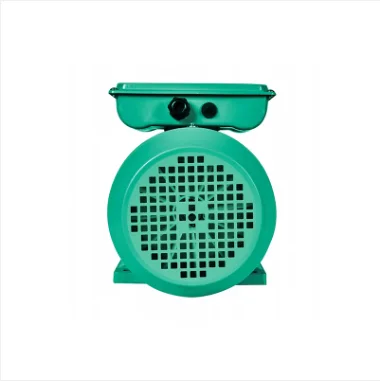A single phase induction motor is a common type of electric motor that is widely used in household and industrial fields. The efficiency of a motor is an important measure of its performance, affecting energy utilization and operating costs. In this article, we will explore several key factors that affect the efficiency of a single phase induction motor.

1. Motor design and manufacturing quality: The design and manufacturing quality of a motor directly affects its efficiency. High-quality materials and precise processing can reduce energy loss and friction and improve the efficiency of the motor.
2. Motor size and power: The size and power of a motor are closely related to its efficiency. An oversized or undersized motor may not achieve optimum efficiency. Proper selection of motor size and power for application needs can improve efficiency.
3. Motor load: The load on the motor has a significant impact on its efficiency. Excessive loads will cause the motor to overrun, increasing energy loss. Proper matching of motor and load can improve efficiency.
4. Motor speed: The speed of the motor also affects its efficiency. Typically, motors are most efficient when operating near their rated speed. The too high or too-low speed will reduce efficiency.
5. Motor winding and iron core: The winding and iron core of the motor are the key parts of energy transmission and conversion. Optimizing the design of windings and cores can reduce energy loss and improve efficiency.
6. Motor loss: Motor loss includes copper loss, iron loss, and mechanical loss. Reducing losses increases the efficiency of the motor. Losses can be reduced by using efficient insulating materials, reducing hysteresis and eddy current losses, and optimizing the design of mechanical components.
7. Motor operating temperature: The operating temperature of the motor has a significant impact on its efficiency. Excessive temperatures can lead to energy loss and aging of insulating materials, reducing efficiency. Maintaining proper operating temperatures increases efficiency.
8. Motor Control: How a motor is controlled also affects its efficiency. Using advanced motor control technologies, such as frequency converters and soft starters, can improve the efficiency of motors.
9. Environmental conditions: Environmental conditions also have an effect on the efficiency of the motor. High temperature, humid or dusty environments may affect the heat dissipation and insulation performance of the motor, reducing efficiency.
10. Maintenance and Maintenance: Regular maintenance and maintenance of the motor is the key to keeping it running at high efficiency. Cleaning the motor, checking insulation, and lubricating the bearings can extend motor life and improve efficiency.
To sum up, there are many factors that affect the efficiency of a single phase induction motor, including motor design and manufacturing quality, motor size and power, motor load, motor speed, motor winding and iron core, motor loss, motor operating temperature, motor control, Environmental conditions and maintenance and maintenance, etc. Understanding these factors and taking appropriate actions can improve the efficiency of electric motors and reduce energy consumption and operating costs. Therefore, when selecting and using a single phase induction motor, these factors should be considered comprehensively to obtain the best performance and efficiency.
What are the types of three phase induction motor?
Factors affecting life of single phase induction motors and guidelines for maintenance
Learn about the classification of single-phase induction motors
The structure and characteristics of single-phase induction motor
Design and manufacturing process of single phase induction motor
https://www.yudongmotor.com/Factors-affecting-single-phase-induction-motor-efficiency.html
